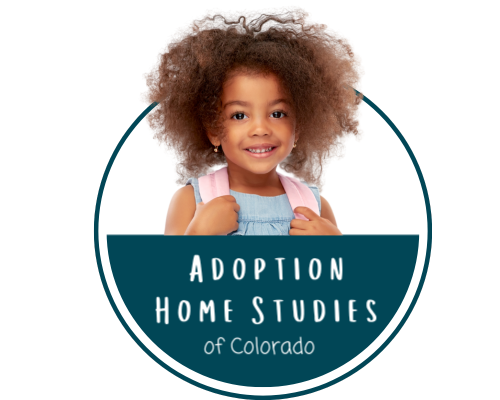Adoption Books
Suggested Reading to Enlighten You
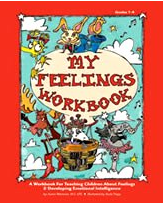 |
My Feelings Workbook by Aaron Wiemeier This workbook is specifically designed to help children understand, deal with and process emotions and feelings on a nonverbal body level. It not only helps children figure out how they feel, but WHERE they feel.
|
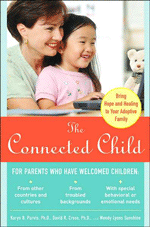 |
The Connected Child: Bring hope and healing to your adoptive family by Karyn Purvis, David Cross, Wendy Sunshine The adoption of a child is always a joyous moment in the life of a family. Some adoptions, though, present unique challenges. Welcoming these children into your family--and addressing their special needs--requires care, consideration, and compassion. Written by two research psychologists specializing in adoption and attachment, The Connected Child will help you:
|
 |
Parenting Your Internationally Adopted Child: From Your First Hours Together Through the Teen Years by Patty Cogen In Parenting Your Internationally Adopted Child, Dr. Cogen explains how and why to help a child cope with grief over the loss of everything and everyone familiar; tell the child's adoption story from the child's rather than the parents' point of view; understand the ways in which a child's development may begin at adoption; handle sleep time, mealtime, and discipline problems; foster identity and independence in pre-teens and teens; and much more. With advice on language and school difficulties and the development of self-control and independence, Cogen guides adoptive parents from preparations for a child's arrival all the way through the teen years. |
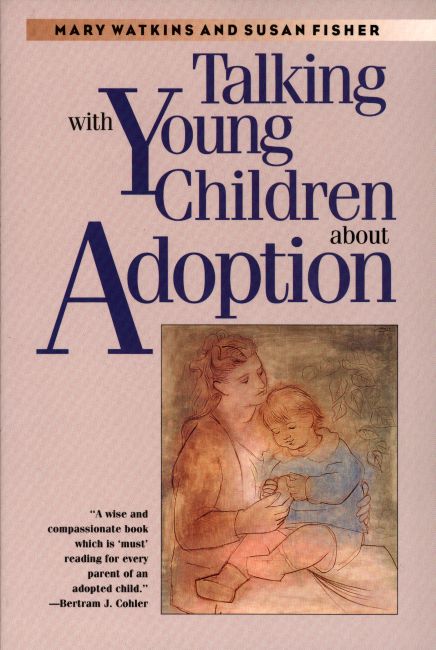 |
Talking with Young Children about Adoption by Mary Watkins and Dr. Susan Fisher, MD Current wisdom holds that adoptive parents should talk with their child about adoption as early as possible. But no guidelines exist to prepare parents for the various ways their children might respond when these conversations take place. In this wise and sympathetic book, a clinical psychologist and a psychiatrist, both adoptive mothers, discuss how young children make sense of the fact that they are adopted, how it might appear in their play, and what worries they and their parents may have. Accounts by twenty adoptive parents of conversations about adoption with their children, from ages two to ten, graphically convey what the process of sharing about adoption is like. |
 |
In On It: What Adoptive Parents Would Like You To Know About Adoption. A Guide for Relatives and Friends by Elisabeth O’Toole One adoption social worker called In On It "the adoption book for everyone else": the grandparents and friends, neighbors and colleagues, aunts and uncles, teachers and caregivers of adoptive families. In On It contains helpful advice and instructive anecdotes from adoptive parents, adult adoptees, adoption professionals, and the friends and relatives of already established adoptive families. The author, an adoptive parent herself, has written an informative, friendly and very useful adoption guide that informs and enlightens readers even as it offers them a warm welcome into adoption. |
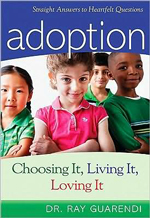 |
Adoption: Choosing It, Living It, Loving It; Straight Answers to Heartfelt Questions by Ray Guarendi Ray Guarendi, psychologist, husband and father of ten adopted children, considers the most commonly asked adoption questions with insight, humor and a heart for the adoptive family. His aim? To dispel unsettling misperceptions about adoption, to encourage others to think about and act on adoption, and to guide adoptive parents to a more relaxed, rewarding family life for all involved. |
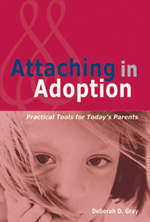 |
Attaching in Adoption by Deborah Gray Many adopted children come to their families at an older age. Their adoptive parents need help in understanding how prior experiences and changes in caregivers, culture, language, and more can create challenges for children trying to form attachments in their new families. Attaching In Adoption provides advice about obtaining a proper diagnosis; building a caring, professional team; using various approaches to parenting and teaching; and finding a therapist who is adequately informed, prepared, and experienced. |
 |
Nurturing Adoptions by Deborah Gray Adoption has changed dramatically in less than a decade. With higher and higher percentages of children joining their families not as newborns, but from domestic or international foster care or from orphanages abroad, both parents and the professionals with whom they consult need new skills. From the author of Attaching in Adoption comes this new tool designed to help placement professionals and therapists whose practices are not focused specifically on adoption and attachment understand how new research on the impact of neglect, abuse, early trauma, and institutionalization on the developing brains of children can guide their practices in new directions. Nurturing Adoption's goal is to help professionals to assist parents in healing their children and guiding them into strong and healthy relationships and productive adulthood. |
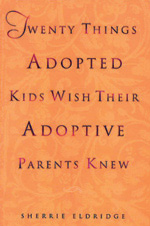 |
Twenty Things Adopted Kids Wish Their Adoptive Parents Knew by Sherrie Eldridge This remarkable book offers an unparalleled window into the heart of the adopted child, giving voice to feelings that are often too difficult to express. In powerful, poignant essays, it highlights the TWENTY THINGS ADOPTED KIDS WISH THEIR ADOPTIVE PARENTS KNEW. It also speaks to the unspoken concerns at the heart of every adoptive family, offering practical advice for addressing past issues, handling current crises, and ensuring a long, loving future for you and your children. |
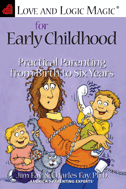 |
Love and Logic Magic for Early Childhood by Jim Fay Let Jim Fay and Charles Fay, Ph.D., help you start your child off on the right foot. The tools in Love and Logic Magic for Early Childhood will give you the building blocks you need to create children who grow up to be responsible, successful teens and adults. And as a bonus you will enjoy every stage of your child’s life and look forward to sharing a lifetime of joy with them. |
 |
Brown Babies, Pink Parents by Amy Ford Brown Babies Pink Parents: A Practical Guide to Trans racial Parenting by Amy Ford is an honest look into the realities of trans racial adoptive families in the United States. Both funny and poignant, it sheds light on the difficulties often faced by adoptive families who have had little, or no, preparation when it comes to parenting a child of a different race. Brown Babies Pink Parents covers a variety of topics, from the physical world of taking care of the lovely hair and skin of African American girls, to the more nurturing side of the importance of role models and celebrating culture and heritage. |
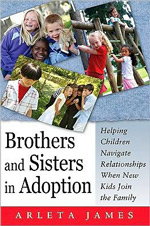 |
Brothers and Sisters in Adoption by Arleta James Having a child with a history of neglect or trauma enter the family is rarely a smooth transition. It is important for everyone involved to have realistic expectations, and give consideration to the possibility that the new child will need special attention that may take away from the already present children. Brothers and Sisters in Adoption offers insights and examples and sturdy, practical, proven tools for helping newly configured families prepare, accept, react, and mobilize to become a new and different family meeting the practical, physical and emotional needs of all its members. These well prepared and supported families are the ones who thrive!
|
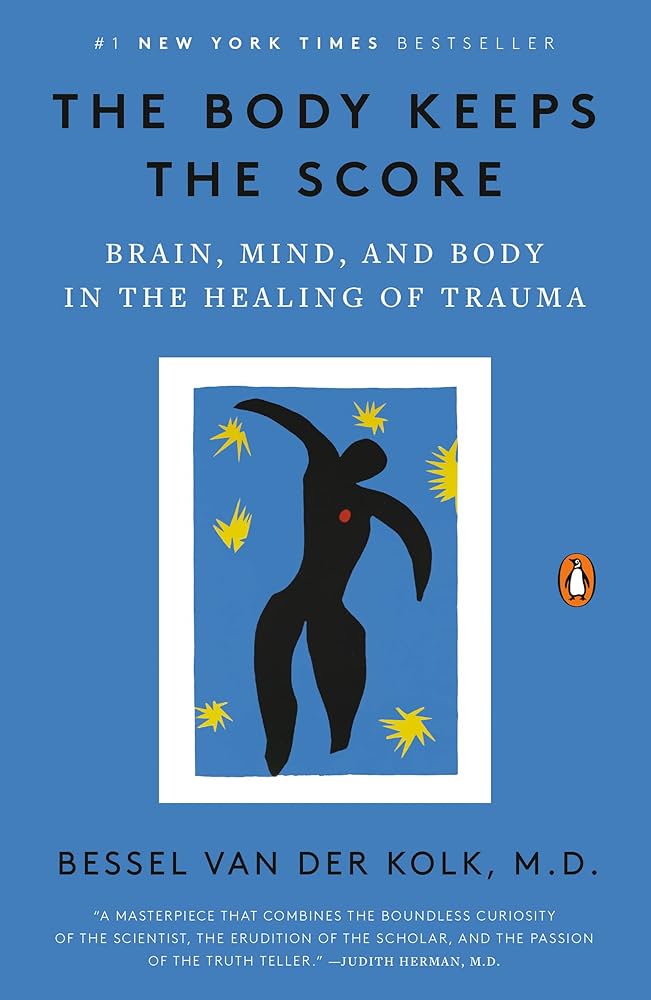 |
The Body Keeps the Score
Drawing on more than thirty years at the forefront of research and clinical practice, Bessel van der Kolk shows that the terror and isolation at the core of trauma literally reshapes both brain and body. New insights into our survival instincts explain why traumatized people experience incomprehensible anxiety and numbing and intolerable rage, and how trauma affects their capacity to concentrate, to remember, to form trusting relationships, and even to feel at home in their own bodies. Having lost the sense of control of themselves and frustrated by failed therapies, they often fear that they are damaged beyond repair. The title underscores the book’s central idea: Exposure the abuse and violence fosters the development of a hyperactive alarm system and molds a body that gets stuck in fight/flight, and freeze. Trauma interferes with the brain circuits that involve focusing, flexibility, and being able to stay in emotional control. A constant sense of danger and helplessness promotes the continuous secretion of stress hormones, which wreaks havoc with the immune system and the functioning of the body’s organs. Only making it safe for trauma victims to inhabit their bodies, and to tolerate feeling what they feel, and knowing what they know, can lead to lasting healing. This may involve a range of therapeutic interventions (one size never fits all), including various forms of trauma processing, neurofeedback, theater, meditation, play, and yoga. Readers will come away from this book with awe at human resilience and at the power of our relationships—whether in the intimacy of home or in our wider communities—to both hurt and heal. |
 Call us!
Call us! 